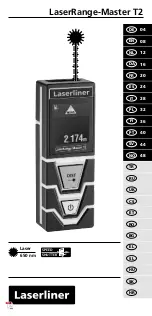
- 3 -
4.0 Installation
There are many ways to mount the microphone, from simply placing the microphone in a clip to
using a two-dimensional array stand. A diagram of an array configuration is provided in Figure
3. For installation of this type, remove the microphone from its package, connect the appropriate
cable between the signal conditioner and the microphone, and connect a second cable between
the signal conditioner and the data acquisition device. Cabling may consist of standard low-
impedance coax cables. Desired electrical connectors would be dependent on the 130 series
microphone used and the input of the signal conditioner and read-out instrument. PCB
®
offers
these cables in a variety of standard or customer specified lengths.
Figure 3
The 130A24 microphone features a removable grid cap and replaceable protective cover. This
allows the 130A24 to withstand harsh environments while extending the lifespan of critical
sensitive components. If the water and dust resistant cover is damaged, having a removable grid
cap allows the user to replace this protective cover quickly and easily.
To replace a grid cap, first unthread the grid cap from the housing. Next, peel off the existing
cover from the end of the housing. Sharp edged tools can be used to aid in cover removal, but it
is important to keep the tool at a shallow angle. DO NOT make contact with the microphone’s
delicate diaphragm (right hand side of Figure 4). To ensure a proper seal, gently wipe the top of
the microphone housing to remove any moisture or debris. Do not use solvent when removing
debirs from the housing because solvents have the potential to damage the microphone. Apply
the replacement water resistant patch to the end of the housing (left hand side of Figure 4) while
keeping it centered. Finally, assemble the grid cap back onto the housing. Additional 079A46
five-pack replacement water resistant pads can be ordered separately.
Figure 4
5.0 Calibration
All microphones are supplied with calibration documentation showing the free field frequency
response and the conditions under which the calibration was performed. Calibrations are
performed with reference microphones traceable to national laboratories specializing in acoustic
measurements (NIST, PTB, or DFM). PCB is ISO 10012-1 and ISO 9001-2008
certified. Calibration methods used by PCB for acoustic pressure have been audited for
proficiency and accredited for compliance with ISO/IEC 17025:2005; ANSI/NCSL Z540-1-1994
& ANSI/NCSL Z540.3. Sample calibration certificates are provided in Figure 5, Figure 6, and
Figure 7 for the 130F series, 130A23, and 130A24, respectively.

































